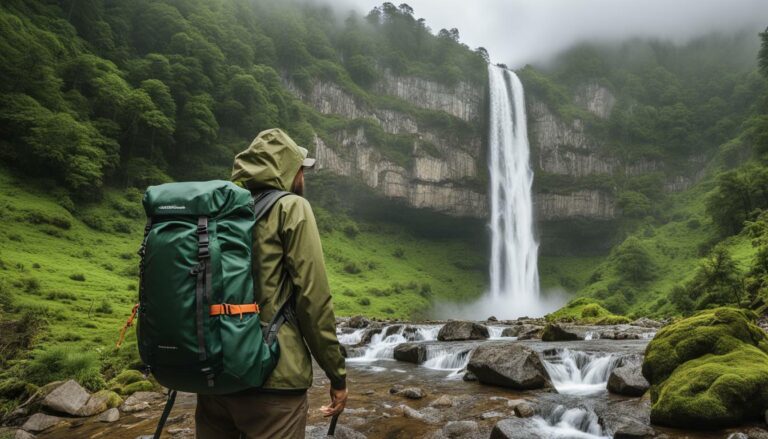Practice Mindfulness hiking on the trail:

In our constantly connected world, it’s more important than ever to find time for yourself. Getting out into nature is a great way to do that, but if you’re not careful, the time can fly by and you may not get as much out of it as you’d like.
Mindfulness is a practice that can deepen your meditation and calm your mind to relieve stress and anxiety, and improve your mental health. It can also help you to bring your mind to the present moment and increase your gratitude. When you are mindful, you give yourself space to be creative and soak up the sensations around you.
Here are three exercises to help you practice mindfulness hiking on the trail and make the most of your time outdoors.

Stay in the present:
Duration: 15 to 20 minutes per step
The best way to enjoy a hike is to stay in the present. This can be difficult when your inner monologue runs rampant, but concentrating on your surroundings can help. Taking in the sights, sounds, and smells of the trail can help you stay attentive and enjoy the hike.
1. Focus on your walking action:
Mindfulness on the trail is all about being in the present moment. It’s also a great way to practice meditation and yoga. When you’re absorbed in your motions, you heighten your senses and become more mindful. This can be especially beneficial when hiking or running on trails, as it allows you to be engrossed on your surroundings and appreciate the natural beauty around you.
When you’re on a run or hike, focus on how your body feels. Notice how your knees bend and straighten, how your muscles tighten and relax, and how the ground rolls beneath your feet. Pay attention to the sights and sounds around you, and take time to appreciate nature’s beauty.
If your mind starts to wander, simply bring your attention back to your body and your surroundings. Mindfulness is all about being present in the moment, so don’t worry if you can’t focus on everything at once.
2. Direct your thoughts to your breath:
When you’re hiking, being mindful of your breath can help you stay present and attentive to the task at hand. It can also help regulate your pace and exertion, depending on how you inhale and exhale. Try practicing breathing in and out through your nose only, then your mouth. Pay attention to the difference in how you feel with each type of breath. In general, breathing in through your nose is slower and more controlled, while breathing out through your mouth is faster and more forceful. Experiment with different combinations to see what works best for you while hiking. You may find that breathing in through your nose and out through your mouth helps you maintain a steadier pace, while breathing in through your mouth and out through your nose helps you increase your speed. Whichever combination you choose, be sure to concentrate on the inhales and exhales in relation to your pace and exertion.
Breathing techniques can be especially helpful in managing fatigue. By concentrating on your breath, you can slow your heart rate and regulate your adrenaline and cortisol levels. This will help you to feel more centered and less prone to mental fatigue.
Taking a few minutes to focus on your breath can also help to clear your mental state and improve your concentration. In addition, being mindful of your surroundings can help you appreciate the natural beauty of the outdoors. Hiking is a great way to get in some exercise, fresh air, and simple mindfulness all at once!
3. Repeat an affirmation:
Repeating a positive affirmation either silently or aloud can help you stay mindful during your hike.
Elite athletes often use affirmations as a way to focus their minds and achieve their goals. These statements help them to stay positive and motivated, even when things get tough. By using an affirmation, you can shift your mindset from negative to positive and start seeing the world in a more optimistic light.
The best part about affirmations is that they are customizable to fit your needs. You can choose an affirmation that resonates with you and suits your current situation.
Cultivate Your Senses: Duration:
5 to 10 minutes per step
Sensory Perception is the ability to take in and understand information through the senses. It’s what we use to navigate and interact with our surroundings. Our five senses are sight, sound, smell, taste and touch. When we focus on using them mindfully, we become more conscious of the world around us. This can be especially helpful when we’re hiking or spending time outdoors.
Our sense of sight can be used to see everything from the details of a leaf on a tree to the mountains in the distance. By taking in this scenery and being aware of what we’re looking at, we can appreciate nature more and connect with our surroundings. Our sense of hearing can pick up on all sorts of sounds from the wind blowing through the trees to a bird singing nearby.
1. See:
When was the last time you really looked at something? Not just glanced at it, but really took the time to let your eyes wander slowly from minute details to larger vistas? Focusing on the present moment can be a challenge when we’re constantly bombarded with distractions, but spending time in nature can help us learn to be more mindful.
The next time you hit the trails, take a few minutes to really fixate on your surroundings. Notice the colors and shapes of the plants, listen to the sound of the wind or flowing water, and feel the textures of the ground and rocks under your feet. As you do this, try to clear your mind of all other thoughts and simply concentrate on what you’re experiencing in that moment.
Not only is this a great way to connect with nature, but it can also help improve your mindfulness overall.
2. Hear:
When was the last time you closed your eyes and paused to really listen? To hear the sound of your own breath and the footsteps you make as you walk? The world is a noisy place, but it’s also full of beautiful sounds if we take the time to listen.
This summer, take some time to get outside and connect with nature through your ears. Listen to the sound of the wind blowing through the trees, or the waves crashing on the shore. Let all of that noise permeate your senses and fill you up.
When we pay attention to the sounds around us, we’re practicing mindfulness. And there’s no better place to do that than on a nature trail. Trails are winding and provide plenty of opportunities for stopping to take in your surroundings. They’re also generally pretty quiet, so you can really be observant on what’s happening around you.

3. Feel:
When you’re out on a hike, take a moment to really feel the environment around you. Touch the trees, dirt, water, and rocks. Feel the weight of your pack, the warmth of the sun, and the wind moving through the trees. This is a mindfulness practice that can help you connect with your surroundings and appreciate the natural world.
It can also be helpful to take some deep breaths and focus on how each one feels. Tune in to any sounds or smells that are present. When you’re fully engaged in the moment, it’s easier to forget about your worries and distractions and just enjoy being in nature.
The practice of mindfulness on the trail slows down brain waves and allows for an increase in alpha waves. This is beneficial because it allows for a greater sense of relaxation and focus.
Hike With Intention: Duration:
15 to 30 minutes
As discussed when we hike, we often go out of our way to take in the natural beauty around us. We enjoy the sights, sounds, and smells of the wilderness. What if we took that same approach to our interactions with others? By hiking with intention, we can focus on developing compassion and self-awareness. This can help us to better understand and appreciate those around us. Spending time in nature can also promote peace and relaxation.
1. Gently bring your awareness to someone in your life. This can be a loved one, someone you are conflicted with, or a stranger. Bring your awareness to the energy that is between you and this person. What does it feel like?
Is it soft and loving, hard and cold, or something else entirely?
If you are feeling something other than love for this person, imagine that the energy between you is a cloud of smoke. See if you can blow it away with your breath.
2. Set a positive intention or wish for this person. I wish for this person to be happy and fulfilled in all areas of their life. I hope they find joy in their work, meaningful connections with others, and a sense of peace within themselves. I believe they have all the potential in the world to create a life they love, and I sincerely hope they get to experience all the good that life has to offer.
3. Now, practice expressing that intention back to yourself. I intend to be kind to myself. This means that I will treat myself with respect and compassion. I will forgive myself when I make mistakes and I will acknowledge and celebrate my successes. I will take care of myself physically, emotionally, and spiritually. I will do what is best for me, even if it is not always easy.
By repeating a mantra while hiking, you can clear your mind and stay in the present moment. Pick a mantra that resonates with you and helps you stay positive. Here are a few examples:
“I am strong and capable.”
“I am at peace with what is.”
“Everything is unfolding perfectly.
Mindfulness isn’t about emptying your mind of all thoughts. It’s about being aware of the thoughts that are passing through your mind and accepting them for what they are. This can be difficult to do when you’re hiking because there are so many distractions, but it’s worth trying to achieve.
When you go hiking, it’s important to find a rhythm. Pushing yourself too hard can quickly lead to fatigue and injury. Instead, take your time and find a pace that feels comfortable. When your mind is focused on keeping up with your body, you can’t focus on anything else. This can be a great opportunity to incorporate mindfulness.
When you’re hiking, focus on the present moment and pay attention to your surroundings. Notice the colors of the leaves, the sound of the birds, and the feel of the breeze on your skin. Take in the beauty of nature and allow yourself to relax and unwind. Mindfulness hiking can also be a creative outlet. Be creative and imaginative as you explore nature’s wonders. Let your mind wander and see what new ideas or inspirations arise. It’s also a great way to practice yoga and meditate. If you’re looking for a way to connect with nature and get in touch with your inner creativity, mindfulness hiking is a great option.

Photos by unsplash






